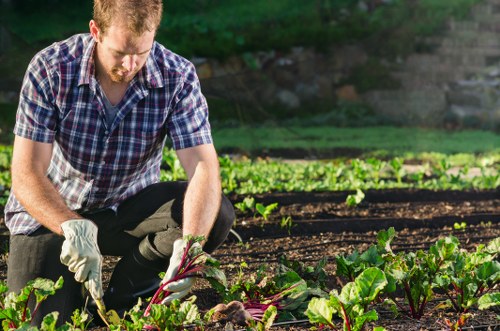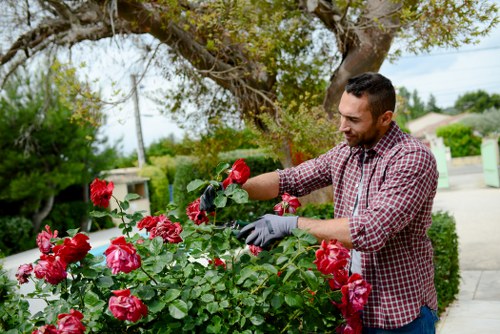Gardeners Limehouse: Cultivating Urban Green Spaces
Introduction to Gardening in Limehouse
Gardeners Limehouse is more than just a phrase – it represents the vibrancy and passion of a community dedicated to nurturing nature amidst the urban landscape. In this bustling part of the city, green spaces have blossomed in surprising ways, showing how determination and creativity can transform even the smallest patch of soil into a thriving garden. Neighborhood gardeners have taken on the challenge of urban horticulture, balancing practicality with passion in every seed they plant.
Throughout Limehouse, residents and enthusiasts share a deep connection with the land, whether tending to private plots or joining community garden initiatives. Local horticultural events have evolved into social gatherings that celebrate organic gardening, sustainable landscaping, and creative design. The fundamentals of gardening in an urban environment are explored in workshops, community centers, and even online forums, making Limehouse an inspiring example for other cities. With a focus on organic practices and traditional methods, the Limehouse gardening community continues to grow and prosper.
Local experts have detailed how Gardeners Limehouse thrives despite urban pressures, emphasizing that even small green spaces can have monumental effects on community wellbeing. The intertwining of cultural heritage with contemporary gardening practices creates a tapestry of experiences that appeal to both hobbyists and professional landscapers. Moreover, the commitment to sustainability and creative reuse of urban environments ensures that every project, whether a rooftop garden or a community allotment, plays a role in the broader ecological picture. This blend of tradition and modernity is what makes Limehouse gardening truly special and a model for urban sustainability.

History and Cultural Significance of Limehouse Gardens
The history of gardening in Limehouse is deeply rooted in tradition. Past generations of residents transformed abandoned lots and unused spaces into lush havens that now serve as public sanctuaries. The evolution of these green spaces reflects the resilience of a community that has continually reinvented its approach toward nature. These garden projects stand as a reminder of how shared dreams and collective efforts brought life to even the most neglected urban areas.
Many local stories recount the transformation of derelict spaces into community gardens that now function as hubs for cultural and educational events. Historically, Limehouse was known for its industrial activity, but as the city evolved, residents reimagined these spaces into areas of beauty and reflection. The heritage preserved in these small parks and community plots has inspired numerous articles, documentaries, and local exhibitions, making them a source of inspiration not only in Limehouse but for urban gardeners worldwide.
The cultural significance of these gardens is also evident in the art and literature that focuses on urban renewal. With the community's solidarity as its backbone, Gardeners Limehouse has become a movement where history and modern creativity intersect. Neighborhood stories and local legends add a rich narrative to the physical spaces, encouraging even those with little to no gardening experience to engage with the land. Through volunteer initiatives and educational campaigns, the heritage of this area is being passed on to younger generations who are eager to carry forward the legacy of urban gardening.

Modern Gardening Practices and Community Involvement
Today, Gardeners Limehouse is synonymous with innovative urban gardening practices that merge traditional techniques with modern technologies. Community members have embraced the concepts of organic gardening and permaculture, applying methods that help conserve water, recycle nutrients, and reduce carbon footprints. This evolution has been key in reimagining urban spaces as productive and aesthetically appealing landscapes.
Local classes and workshops play a pivotal role in imparting skills to novice gardeners and seasoned horticulturists alike. Topics range from basic soil preparation and organic pest control to advanced sustainable landscaping techniques. Under the guidance of experienced local growers, residents learn how to turn even the smallest balcony or rooftop into a vibrant garden oasis. These efforts underline the power of community in creating a shared space where knowledge and passion are exchanged freely.
Moreover, Gardeners Limehouse have initiated various online forums and social media groups that act as virtual meeting places for sharing ideas and advice. This online presence complements in-person collaborations and allows for the dissemination of ideas about urban farmer innovations. Community garden clubs, planting events, and local green fairs foster a sense of unity and environmental responsibility in the neighborhood. The resulting synergy is a testament to how urban design and community participation can revitalize and empower a city’s green areas.

Sustainability, Organic Methods, and Urban Gardening Challenges
One of the primary goals for Gardeners Limehouse is to promote a sustainable lifestyle through urban gardening. Embracing organic gardening practices, many local enthusiasts have taken on the challenge of reducing chemical usage and relying on natural processes to maintain garden health. By using compost, natural fertilizers, and companion planting, these gardeners demonstrate that environmental care and high-yield results can go hand in hand.
Despite its many advantages, urban gardening in Limehouse also faces challenges such as limited space, soil contamination, and urban pollution. However, innovative solutions have emerged from within the community. Raised garden beds, container gardens, and vertical farming are just a few strategies employed to overcome these obstacles. These methods not only maximize available space but also exemplify a commitment to green living even in high-density urban areas.
Local initiatives have further highlighted the importance of addressing urban challenges through sustainable means. Educational campaigns in schools and community centers raise awareness about the negative effects of urban sprawl and pollution on natural habitats. In addition, many of these projects incorporate renewable energy sources and water conservation techniques, serving as role models for city planners and sustainable architects. The resilience and ingenuity of Gardeners Limehouse are evident in every innovative solution they create, transforming challenges into opportunities for growth.

Local Relevance: Nearby Areas for Gardeners in Limehouse
Gardeners Limehouse is not an isolated phenomenon; it thrives on a network of nearby communities that also show a passion for urban greening. Understanding the local geography adds depth to the movement, as residents often draw inspiration from neighboring areas. For instance, Poplar is known for its vibrant local market and community gardens, while Canary Wharf presents a stark contrast with its high-rise modernity juxtaposed against hidden pockets of green.
Additional areas include Mile End, which offers accessible parks and strong neighborhood ties, and Bethnal Green, famous for its cultural mix and inspiring community gardening projects. In the vicinity, locations like Whitechapel and Stepney have developed their own unique gardening clubs, each adapting to the urban environment in distinct ways. These nearby areas contribute to a regional identity, reinforcing the positive impact of green spaces in diverse urban settings.
Other localized areas that have partnered with Gardeners Limehouse include Wapping, East Ham, Bow, Hackney, and Stratford. Each of these communities displays its own flavor of horticultural enthusiasm, whether through rooftop gardens or community allotments. Their shared commitment to sustainable practices creates a network of green initiatives that extends far beyond the confines of Limehouse alone. This interconnected community not only strengthens local networks but also highlights the potential for urban gardening to serve as a unifying force in diverse socio-economic landscapes.

Gardening Events, Workshops, and Future Prospects
Looking toward the future, Gardeners Limehouse is planning a series of events and workshops that are designed to educate, inspire, and empower more residents to participate in urban gardening. These events are scheduled throughout the year, featuring expert talks, hands-on demonstrations, and interactive garden tours. They provide the perfect opportunity for newcomers to discover the joys of gardening while also offering a platform for experienced gardeners to share their knowledge.
Local planners are working alongside environmental organizations to create programs that address the urgent need for sustainable urban development. Innovative techniques such as aquaponics and hydroponics are being introduced in these events, attracting interest from both the younger generation and seasoned horticulturists. The workshops not only cover traditional gardening methods but also highlight the integration of modern technology into urban garden management. This mix of old and new has sparked excitement across Limehouse as residents look to embrace a holistic approach to nature in the city.
Moreover, many events are designed with community input in mind, ensuring that the programs are both inclusive and representative of local needs. Partnerships with schools, community centers, and local businesses have resulted in a vibrant calendar of green events. These initiatives are expected to further solidify the reputation of Limehouse as a beacon for urban gardeners and sustainable city planning. Planning committees remain optimistic that the continued growth of educational events will forge stronger bonds within the community and foster a greener future for the region.
Innovations in Urban Design and Integrated Green Infrastructure
Urban design in Limehouse has become a field of constant innovation, merging aesthetic appeal with environmental responsibility. As part of the Gardeners Limehouse ethos, city planners and local horticulturalists are collaborating to incorporate green infrastructure in public spaces. Techniques such as bioswales, green roofs, and living walls are increasingly common, creating pockets of nature in otherwise concrete-dominated environments. This blend of architecture and horticulture is not only practical but also visually stunning.
Community-driven projects have been instrumental in advocating for integrated green spaces that benefit both ecological systems and urban residents. These collaborations often include input from local parks departments, environmental experts, and community leaders. Together, they work on pilot projects that demonstrate how thoughtful planning can mitigate urban heat and improve air quality. The success of such projects has encouraged further investment in developing integrative designs that account for the ecosystem services provided by urban green spaces.
Furthermore, local businesses and non-profit organizations have thrown their support behind innovative urban design projects. Programs that promote the usage of recycled materials, low-impact construction, and energy-efficient practices are being implemented across Limehouse. Workshops on integrated green infrastructure are regularly held, helping community members understand the technical aspects of these initiatives. This collective effort has cultivated a sense of pride and purpose among residents, reinforcing the notion that sustainable urban living is achievable when everyone collaborates towards a shared vision.
Community Engagement, Volunteerism, and the Road Ahead
The heart of Gardeners Limehouse is the community itself. A fundamental element of urban gardening here is the focus on volunteerism and community engagement, which has spurred numerous local collaborations. Many residents volunteer their time for community clean-ups, garden maintenance, and local beautification projects. These acts of service not only nurture physical gardens but also strengthen community ties, creating a network of support and collaboration across different age groups and backgrounds.
Local volunteer groups and garden clubs regularly organize meet-ups, where experienced gardeners mentor beginners and share resources. These grassroots initiatives play a significant role in ensuring that the passion for sustainable urban gardening continues to flourish in Limehouse. In addition, community councils are working on projects that integrate public art with urban green spaces, fostering an environment that celebrates creativity and respect for nature. The synergy between volunteer efforts and formal urban planning is a promising sign of a city that values both innovation and tradition.
Looking to the road ahead, community leaders stress that the sustainable development of Gardeners Limehouse will rely on continued public involvement and a commitment to environmental education. Plans for future projects include expanding community garden spaces, launching advanced workshops, and developing partnerships with local schools to incorporate gardening into educational curricula. With these progressive plans in place, the spirit of Limehouse remains resilient and unwavering, paving the way for a future where urban nature is not just an ideal, but a daily reality for every resident.